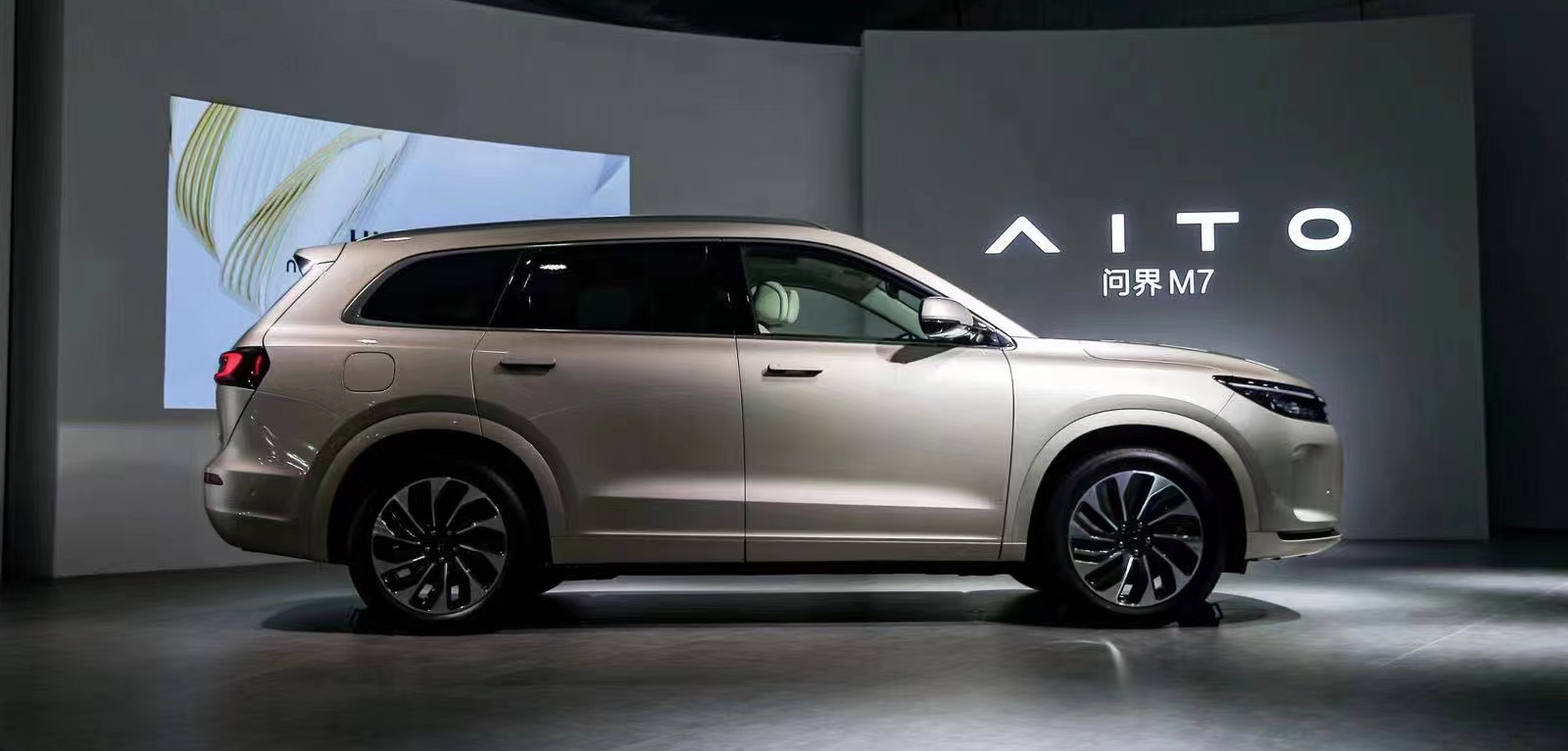Author: Zheng Senhong
Is there a competitor for the mid to large-sized SUV, with a 2+2+2 6-seat layout and extended-range power, the Ideal ONE?
On July 4th, ATIO’s second model, the Wanjie M7, was officially unveiled for a price of 319,800 to 379,800 yuan, and deliveries are expected to begin in early August:
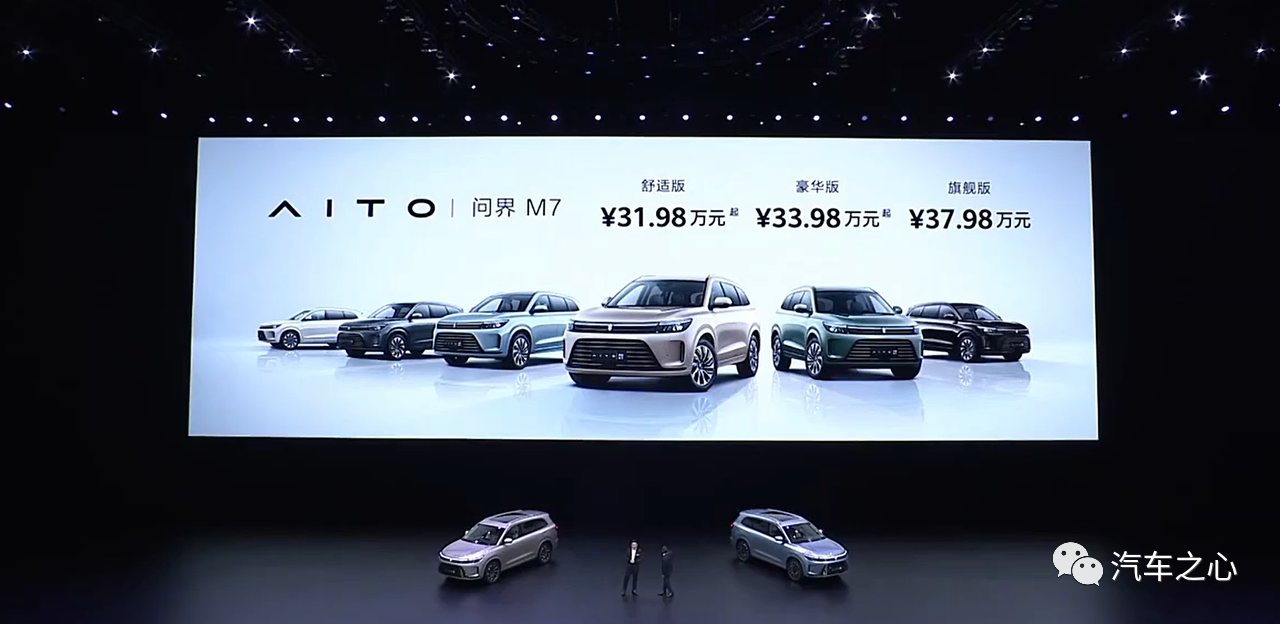
- Comfort version: starting at 319,800 yuan
- Luxury version: starting at 339,800 yuan
- Flagship version: starting at 379,800 yuan
In six months, ATIO’s delivery speed of the M5 and M7 models has exceeded that of most competitors with Huawei’s support.
Since the delivery of the Wanjie M5 began in March of this year, sales have been on the rise month by month, with 7,021 units sold in June alone. In less than four months, the cumulative delivery volume of the Wanjie M5 has exceeded 18,000 units, breaking the record for the fastest delivery of a single model to ten thousand units.
With the Wanjie M5 demonstrating good overall product strength, what are the highlights to look forward to in the Wanjie M7? And what is its competitiveness?
How does the Wanjie M7 compare to the Ideal ONE?
As ATIO Wanjie’s second car model, the Wanjie M7 is positioned as a mid to large-sized SUV with extended-range power. Similar models in the same segment of the market include the Ideal ONE, the Niuchaung Ziyoujia NV, and the Lithium Voyah FREE.
From the current progress and market performance, the Niuchaung Ziyoujia NV has not been launched yet, the production capacity of the Lithium Voyah FREE is still climbing, and the monthly deliveries of the Ideal ONE have stabilized over ten thousand units.
According to reports, within Huawei, Yu Chengdong set a goal for the Wanjie M7 to sell over ten thousand units per month. Following Yu Chengdong’s principle of “being the best and not the second best,” there is no doubt that surpassing the Ideal ONE is the biggest goal for the Wanjie M7.Therefore, how to break through in the trend of the internalization of intelligent automobiles is the first challenge facing Wanjie M7. Moreover, when confronted with the ideal ONE that has won the hearts of most fathers, Wanjie M7 must stand out with unique product prowess.
So, how can Wanjie M7 overcome these inevitable predicaments?
With regard to the almost “perfect” ideal ONE, Wanjie M7’s product prowess is mainly reflected in the following three aspects:
- Intelligent Cockpit
- Comfortable Space
- Power System
On the Wanjie M5 model, we could see that the HarmonyOS car system, whether manually operated, voice commanded or through third-party applications, left a deep impression on users due to its fluidity.
Compared with the car systems of other automakers, the main characteristic of HarmonyOS is “one-step direct access.”
—— It keeps only one level of operation to avoid logic like having to navigate through two or three levels of menus or execute functions, while also offering the convenience of physical buttons through personalized customization modules.
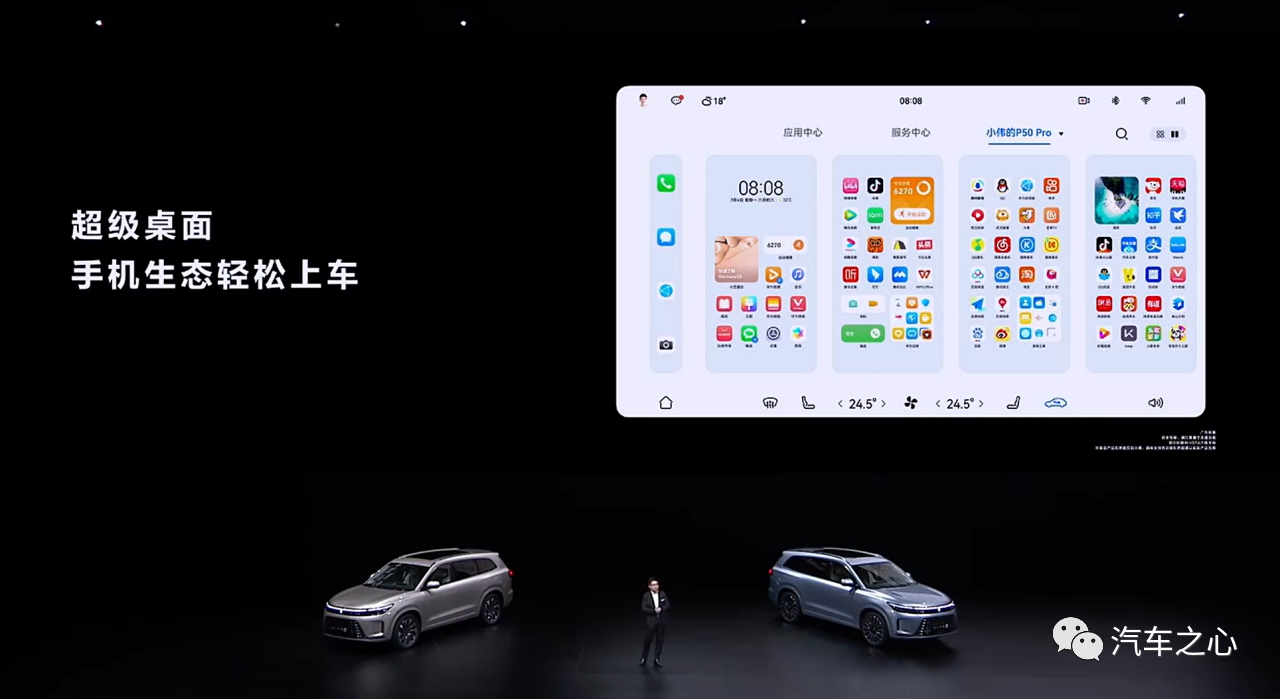
In addition to solving the problem of slow software updates for users in the later stages, the high efficiency brought about by the bottom-layer logic is even more important in breaking down the barrier of single software. TikTok alone cannot make consumers favor a particular car model, but an App suite is the choice for most young consumers.
Compared with Wanjie M5, the intelligent cockpit of Wanjie M7 has added Super Desktop Function, which supports seamless flow between mobile phones and car systems based on HarmonyOS’s distributed capabilities. Mobile applications can also seamlessly adapt to the car, such as a one-touch synchronization of the address shared through WeChat to the car navigation.
Furthermore, the HarmonyOS cockpit has the functions of intelligent four-tone zone recognition, visual speech recognition and continuous conversation for 60 seconds, as well as providing intelligent reminders for users, allowing them to tell “Xiao Yi” what tasks need to be done through voice prompts.
In addition to maintaining the high efficiency of the HarmonyOS car system, Wanjie M7 has also cooperated with Leshi KTV to create a family KTV, and deeply adapted it to the cockpit. The combination of atmosphere lights, sound systems, and gamepads creates an immersive entertainment cockpit experience.
At the same time, Wanjie M7 also uses pioneering floor recognition technology to record the parking floor. When the vehicle reaches the target parking space, based on OCR algorithm technology and DVR & transparent chassis dual perspective recognition, the parking floor and parking space number of the vehicle are transmitted to the owner’s App, which solves the problem of finding parked cars in parking lots.
When an automobile’s cockpit simultaneously meets the requirements of atmosphere and functionality experiences, what remains is providing a comfortable space for the experiencer. This is also where Yu Chengdong is most confident about Wanjie M7.
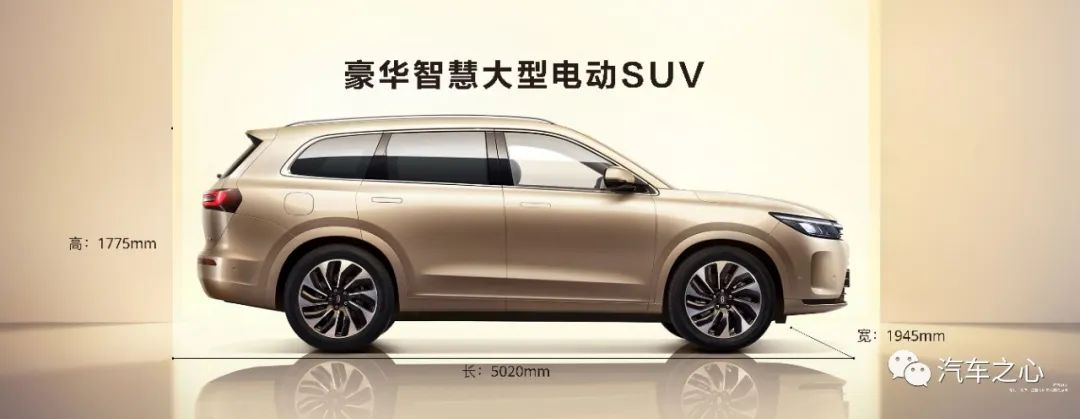 In terms of body dimensions, the width, height and length of the Arcfox α-M7 are 1945mm, 1775mm, and 5020mm respectively, with a wheelbase of 2820mm.
In terms of body dimensions, the width, height and length of the Arcfox α-M7 are 1945mm, 1775mm, and 5020mm respectively, with a wheelbase of 2820mm.
Despite not having the longest wheelbase in its class, the 5-meter length and almost 2-meter width of the vehicle still provide ample space for both front and rear passengers, while also maintaining vehicle handling.
How was this achieved?

The Arcfox α-M7 uses a three-row, six-seat layout, benefiting from Huawei’s high integration powertrain reducing the engine compartment space ratio, while also reducing the thickness of the seat backrest to achieve a total longitudinal passenger space of 2605mm in the front, middle, and rear rows, providing a comfortable space for the second and third rows.

At the press conference, Yu Chengdong provided a set of data demonstrating that through targeted optimization of space, the length of the L113 was compressed to 422mm, achieving a conversion rate of 92.4% for interior space, making the “public area” smaller and the passenger space larger.

Among them, the right-hand seat of the second row adopts what is claimed to be the world’s first “commercial zero-gravity seat”: one-click can automatically lift or adjust the legs, hips and waist, achieving a true “life flat”.
When the angle between the passenger’s thigh and torso is 113°, it is the most comfortable curve for the human body, effectively dispersing the user’s body pressure to the legs, hips, and waist, achieving a “zero pressure” sensation.

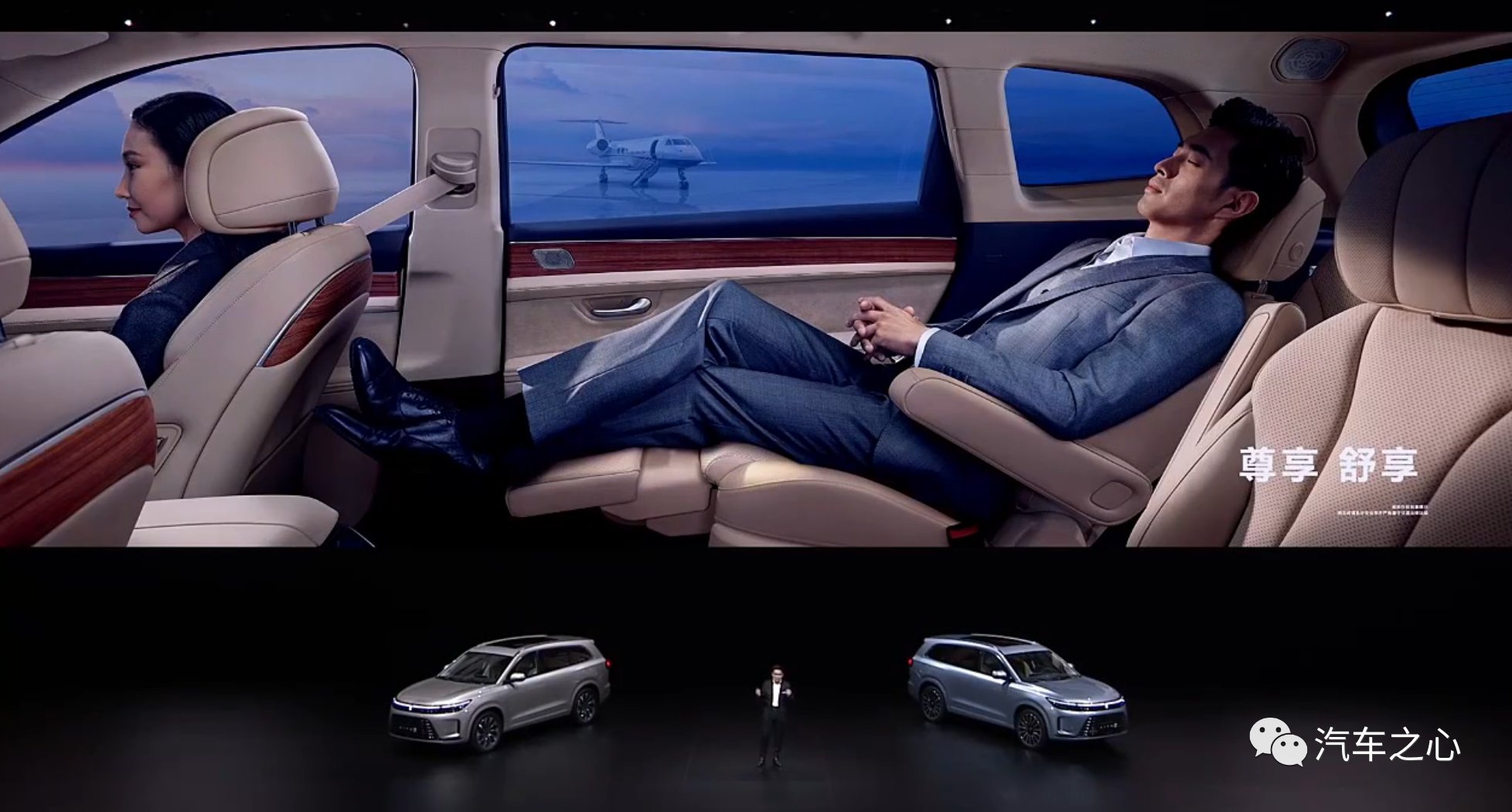
Of course, before activating the zero-gravity seat’s “flat mode”, if there is a passenger in the front passenger seat, the seat must be adjusted forward manually for the zero-gravity seat to move automatically.
In addition to making adjustments to the lateral space, the most significant highlight of the third row is that the backrest angle can be adjusted up to 33°, which alleviates the awkwardness of the third-row seats being uncomfortable, and the Arcfox α-M7 is also equipped with independent speakers, air conditioning vents, cup holders, and more for the third row.
Of course, the third row does not sacrifice the storage space of the trunk.Even when the car is fully loaded, it can still accommodate 4 pieces of 20-inch luggage, meeting the needs of both passengers and storage. When the rear seats are folded down, 4 pieces of 28-inch luggage can be accommodated, providing ample space to satisfy the multi-scenario needs of a family.
From the cabin ecology to the comfortable space, this is the biggest differentiation of the Wanjie M7 compared to the same level of competitive models on the market, and it is also the core positioning of the Wanjie M7 as a highlight for family and business use.
In terms of powertrain, the Wanjie M7 also adopts a combination of 1.5T four-cylinder engine + electric motor, providing both rear-wheel drive and four-wheel drive versions.
Among them, the four-wheel drive version has a maximum power of 330kW and can accelerate from 0 to 100 km/h in 4.8 seconds. Whether it is electric motor power or acceleration time, the Wanjie M7 is higher than the ideal ONE.
In terms of range, the electric range of the Wanjie M7 rear-wheel drive version is 230 kilometers, while the total range with a full tank and full battery is 1220 kilometers. The four-wheel drive version has an electric range of 200 kilometers and a total range of 1100 kilometers with a full tank and full battery.
Backed by Huawei, with the three advantages of intelligent cabin, comfortable space, and powertrain system, the Wanjie M7 may be able to compete with the ideal ONE.
Will the sales of Wanjie M7 catch up with the ideal ONE?
Stable monthly delivery of over 10,000 units and a leading position in the domestic new energy vehicle market as well as mid-to-large-sized SUV segment make the ideal ONE a “new star”.
On the other hand, the accumulated delivery volume of Wanjie M5 has exceeded 18,000 units in 4 months, breaking the fastest record for a single model in the Wanjie brand. The sales momentum is no less than that of the ideal ONE.
So, with the added selling point of extremely comfortable space tailored for family and business use, will the final market performance of Wanjie M7 surpass the ideal ONE?
The success of the ideal ONE lies in two points:
First, it has a precise market positioning, based on the pain points of traditional fuel SUVs and pure electric SUVs, to meet the travel needs of families.- The second is the prominent product strength performance, with standard entry-level features and safety, without optional configurations.
If the Ideal ONE is a mobile space like home, then the WENJIE M7 is a space that focuses more on comfort on the basis of performance and endurance.
This raises questions about the user profile of the WENJIE M7. Who will be its potential biggest consumers?
Advantages of mid-large SUVs like Ideal ONE, WENJIE M7 are:
- They can reach the MPV market in terms of size and space and meet the needs of both business and family users with superior product strength.
- They can enter the midsize SUV market in terms of price and positioning and stand out among same-level models in terms of cost performance.
The WENJIE M7 has a first-class comfortable experience and a price range of 319,800 – 379,800 yuan, threatening new energy MPVs like DENZA D9, Voyah Dream Home, and competing with midsize SUVs like BYD Tang, NIO ES6 in the lower limit.
In a sense, the WENJIE M7 can cover three subdivided market segments.
This means that compared to Ideal ONE, which focuses on the mid-large SUV sub-market, the WENJIE M7 expands the market capacity with the advantage of scaling up comfort and ensures that it can quickly establish market size and influence.
Huawei Empowerment, What Can AITO Achieve?
As a joint venture between Huawei and Sokon Motors, AITO is an upscale brand. AITO’s WENJIE products are iterating at an increasing pace.
From the release of the WENJIE M5 extended-range version in December last year to the WENJIE M7 released in July of this year and to the WENJIE M5 pure electric version scheduled to be released in September, three models will be sold simultaneously, which will further increase WENJIE’s sales.
From the counter-cyclical sales of the WENJIE M5 to the fast production and sales of the WENJIE M7, AITO’s rapid growth relies on Huawei’s support in distribution channels, brand, product development capabilities, and Harmony operating system.
It’s reported that both parties have already planned 5 years ahead for the new model. The next generation of WENJIE models will also be equipped with the Huawei HI solution.
Of course, behind the rapid delivery of products is the strong manufacturing capability.The WENJIE M7 will be delivered from the brand-new Phoenix factory in Siles, and with the previous production of WENJIE M5 at the Smart Two Rivers factory, the annual output will reach 300,000 units.
With the increasing monthly sales of WENJIE M5 and the rapid delivery of WENJIE M7, the cooperation between Xiaokang Group and Huawei has entered the right track.
This also indicates that a new car-making model named Huawei HI has been initially successful by the collaboration between Huawei and Siles.
In the future, there may be new car companies joining the Huawei HI mode to achieve the advancement of their brand and product capabilities by leveraging Huawei’s channels and influence.
This article is a translation by ChatGPT of a Chinese report from 42HOW. If you have any questions about it, please email bd@42how.com.
